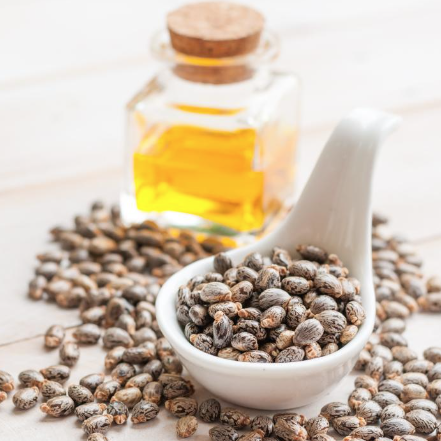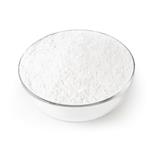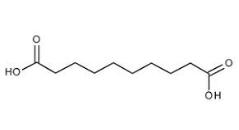A natural C10 liquid fatty acid: Sebacic acid
Introduction
Sebacic acid (SA) is a natural C10 liquid fatty acid directly produced from castor oil. Sebacic acid is an alpha,omega-dicarboxylic acid, the 1,8-dicarboxy derivative of octane. It has a role as a human metabolite and a plant metabolite.

Uses
SA is an aliphatic saturated 10-carbon dicarboxylic acid (DCA) with multiple applications. Its most common application in the plastics industry is the production of polyamide polymers (e.g. PA 6,10, PA 4,10, and PA 10,10), which confers important properties such as flexibility, hydrophobicity, durability, and low melting temperatures. SA is also applied to dibasic polyesters to yield flexibility, stability, chemical, and solvent resistance. Moreover, SA produces lubricants, such as dioctyl sebacate (DOS) and dihexyl sebacate (DHS). Another interesting application of SA is the development of chitosan- and collagen-based 3D scaffold materials, which are biocompatible and mechanically resistant[1].
Sebacic acid naturally occurs in human sebum and the skin's extracellular matrix. It is a white flake or powdered crystal used in skincare formulations as a component of surfactants, lubricants, detergents, emulsifiers, etc. It's also an intermediate product of the body's medium- and long-chain fatty acids metabolism, so it's a safe ingredient for cosmetics and skincare products. In vitro studies showed that Sebacic acid can cross-link with collagen type I and improve its mechanical properties. Thus, besides moisturizers, it is used in formulas to improve the skin's elasticity and surface texture, minimizing the appearance of blemishes and breakouts.
Produce process
Sebacic acid is normally made from castor oil, essentially glyceryl ricinoleate. The castor oil is treated with caustic soda at high temperatures, for example, 250 °C, so that saponification, leading to the formation of ricinoleic acid, is followed by a reaction giving sebacic acid and octan-2-ol. Because of the by-products formed, the yield of sebacic acid is necessarily low, and in practice, yields of 50–55% (based on the castor oil) are considered good[2].
Sebacic acid may also be produced by an electrooxidation process developed by the Asahi Chemical Industry in Japan and piloted by BASF in Germany. It produces high-purity sebacic acid from readily available adipic acid. The process consists of three steps. Adipic acid is partially esterified to the monomethyl adipate. Electrolysis of the potassium salt of monomethyl adipate in a mixture of methanol and water gives dimethyl sebacate. The last step is the hydrolysis of dimethyl sebacate to sebacic acid. Overall yields are reported to be about 85%.
References
[1] Jeon, Woo-Young et al. “Microbial production of sebacic acid from a renewable source: production, purification, and polymerization†.” Green Chemistry 23 (2019): 6491–6501.
[2] Brydson, J. “18 – Polyamides and Polyimides.”Plastics Materials (Seventh Edition) (1999): 478-530.
You may like
Related articles And Qustion
See also
Lastest Price from Sebacic acid manufacturers

US $80.00/kg2025-08-29
- CAS:
- 111-20-6
- Min. Order:
- 1000kg
- Purity:
- 99.50%
- Supply Ability:
- 50 ton per month

US $3.00/kg2025-04-21
- CAS:
- 111-20-6
- Min. Order:
- 1kg
- Purity:
- 0.99
- Supply Ability:
- 10000





